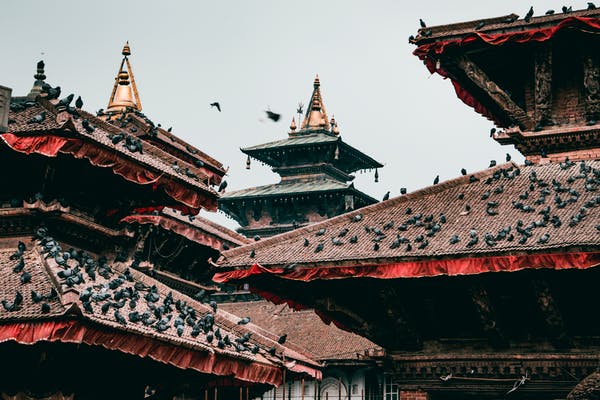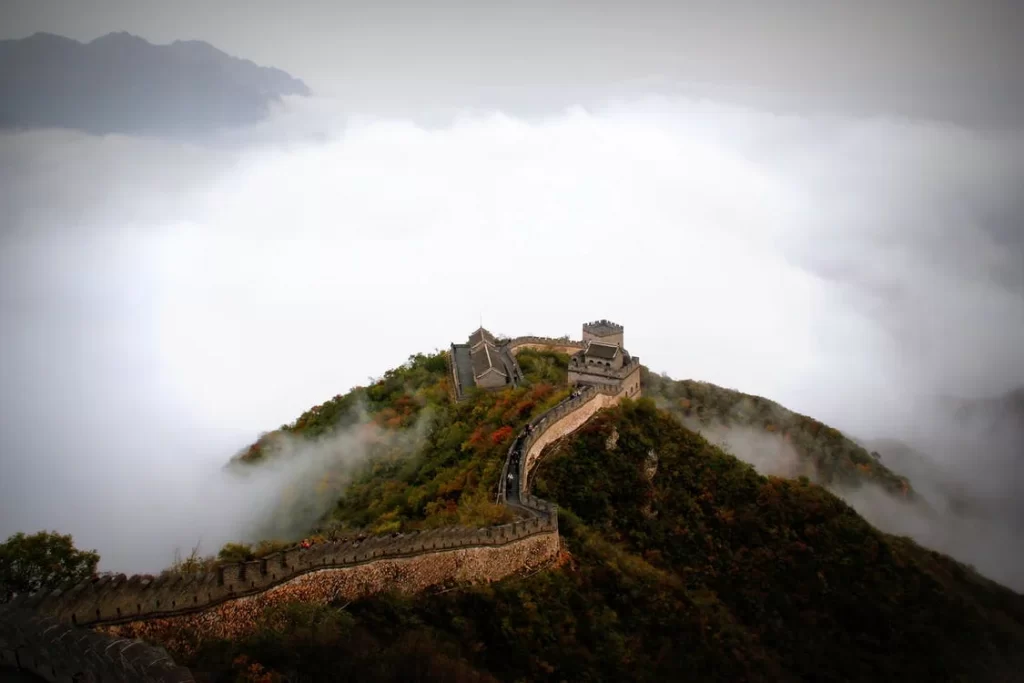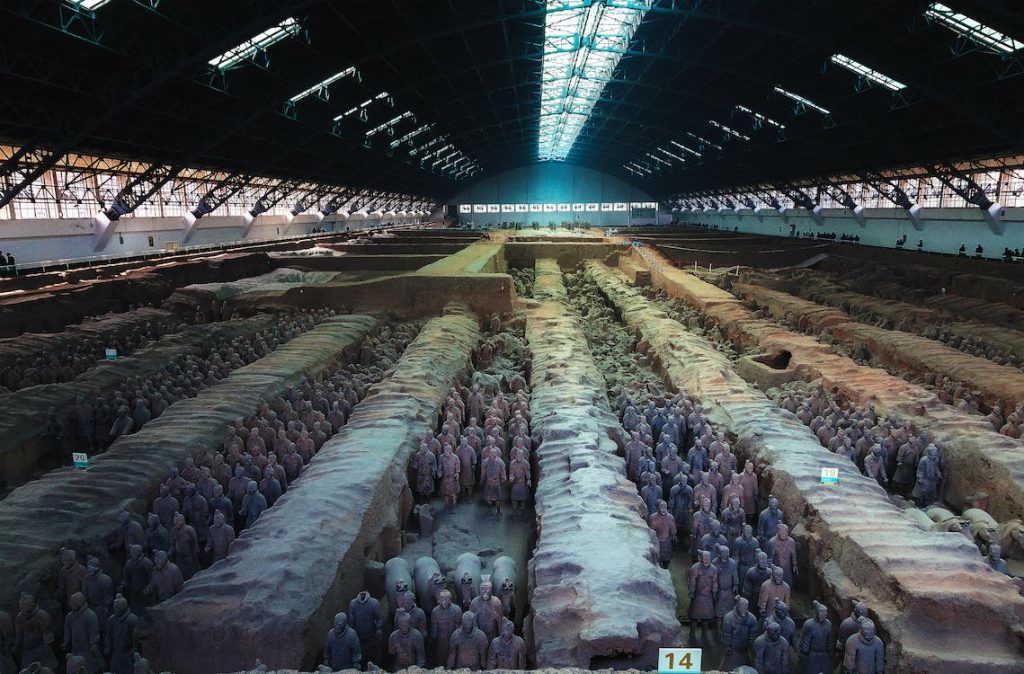
Under the scorching midsummer heat and unforgivably cold winter nights in drought-parched Shaanxi province lies the Terracotta Army. This artificial wonder was initially built to accompany the first Emperor of China— Qin Shi Huang, in the afterlife. In three compartments are thousands of life-sized soldiers, molded from terra cotta (red-colored clay), standing in fixed battle arrangements with molded horses and chariots. Most soldiers were developed in segments, fired, and assembled.
The discovery of the Terracotta Warriors is considered the greatest of the twentieth century, and It is also considered one of the greatest archeological sites in the world. Making it a must-see for history buffs.
History of Terracotta Army: A Quest of Immortality
Over the past 35 years, archeologists have discovered 600 pits (mostly unexcavated) across a 22-square-mile area. Three vaults and an exhibition hall are easily accessible, where most terracotta soldiers are located along with other artisans, strongmen, acrobats, and musicians. As stunning as it is, this place often makes its visitors wonder about the purpose of its existence. And to get the answer, we need to dig really deep into the historical background of the terracotta army.
Qin Shi Huang: The First Emperor of China
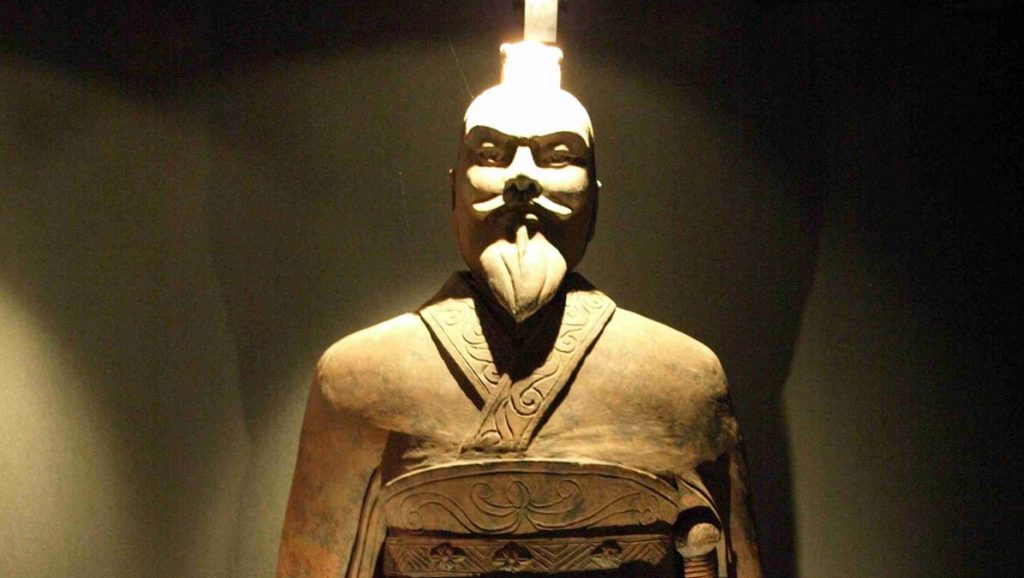
Qin Shi Huang, born Zhao Zheng in 259 BC, Qin State in north-western China, ascended to the throne at 13 years of age after his father’s death (King of Qin)1. After unifying all seven states of China under a single administration, Qin Shi Huang proclaimed himself “The First Emperor of China.” To this day, Qin Shi Huang is considered a brutal, war-mongering ruler who ruled by force. Although, there is truth to the claim as Qin Shi Huang burned books and killed Confucius scholars, who protested his obsession with magic and alchemy. However, a nation can’t only be ruled by brute force without any civil administration. At an early age, Qin Shi Huang was educated about war and administration and was proficient with his methods.
Qin Shi Huang’s Obsession with Immortality:
The fascinating part of the Emperor’s history is his obsession with achieving immortality. The alchemists informed the Emperor about the magical herbs found in three Islands of Immortals in the East China Sea. Over the course of time, The Emperor sent many youngsters(It was asserted only uncorrupted children could access the Islands) in search of the herbs, and none of them returned. However, one alchemist finally returned and told tales about a giant fish guarding the Islands. Which prompted The Emperor to lead the search party himself. On the expedition, it is narrated that he used a repeating crossbow to kill the fish. However, The Emperor couldn’t find the elixir. Instead, he contracted a life-threatening disease and eventually succumbed to death.
Qin Shi Huang: The Immortal Man
Although most people remember Qin Shi Huang as a self-serving and war-mongering ruler. He was much more than that. It is true that after the death of Qin Shi Huang, the Qin dynasty lasted only four years. But his legacy’s impact remains on the fabric of China’s history that followed. Some of the many achievements he is credited for are;
- The Great Wall of China.
- Single writing scripture for the whole empire.
- Civil administrative units across the empire.
- The Terracotta Army.
- A common currency and standard units of measurement.
- Built a network of roads and canals throughout the country.
In the end, Emperor Qin Shi Huang is immortal, after all. He might not be alive in the flesh, but his name, actions, and legacy are still discussed. The Great Wall, The Terracotta Army, and many more marvels to his name still make people awestruck by his genius.
The Terracotta Army:
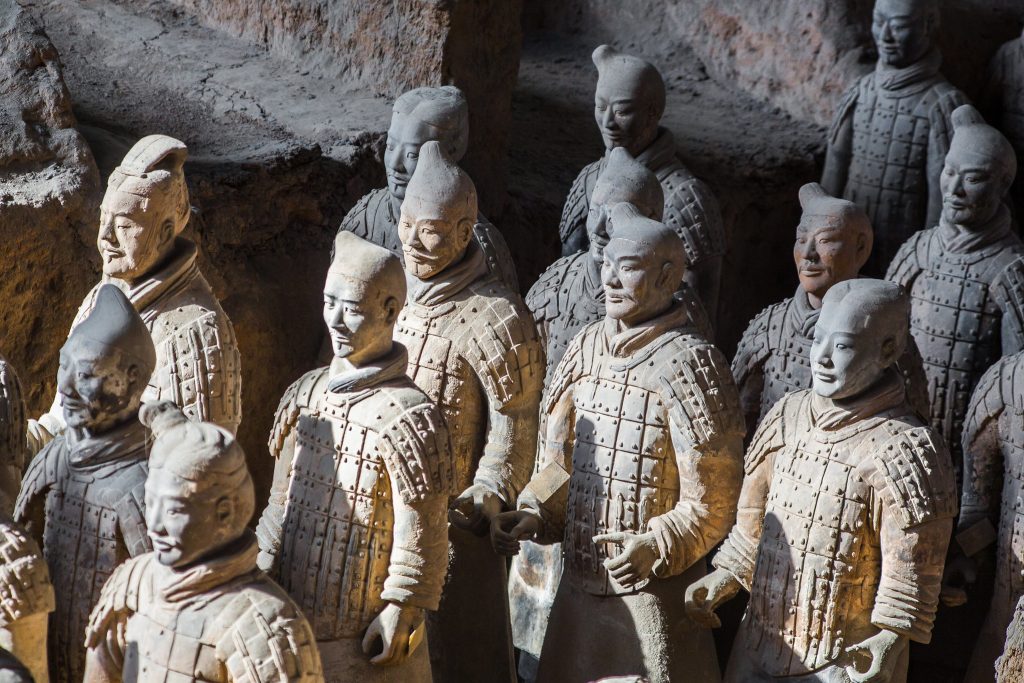
The subjects of The First Emperor started building the Terracotta Army in 246 BC. It is estimated that over 720,000 builders made the army in forty years, and the complex was completed in 206 BC. Instead of taking alive subjects like the practices in Egypt and Latin America. Qin Shi Huang chose to build a clay army to protect him in the afterlife.
After the death of Qin Shi Huang, The Terracotta Army received extensive damage from plundering forces that entered the pits to loot the real weapons. Moreover, archeologists found signs of fire set to some pits after the ransacking and plundering.
Distinct Features of The Terracotta Soldiers:
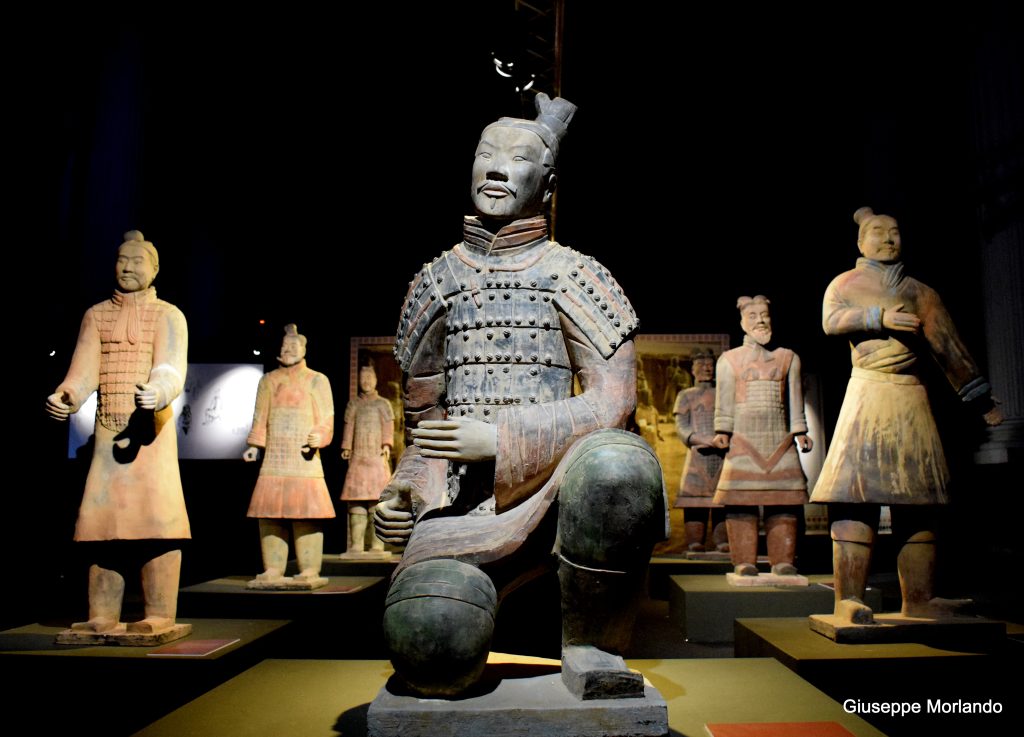
Not only are the Chinese clay soldiers unique, but they carry distinct characteristics, alleviating the experience of visiting the place.
Categories of The Qin Army:
All the soldiers fall under three distinct categories; infantry, cavalry, and charioteers.
The infantry is divided into sub-categories: light and heavy-armed foot fighters, high, middle, and low ranked officers, and standing and kneeling archers.
Also, the charioteers are categorized into two main sub-divisions; chariot warriors and chariot drivers.
Facial Features:
Every figure has distinct facial features, which can be categorized based on ranks. Analysis suggests that all facial features are based on eight Chinese characters;目, 国, 用, 甲, 田, 由, 申, and 风.
Terracotta Warrior’s Hairstyles:
In ancient China, hairstyles meant more than a lifestyle choice. For most of the society, it reflected their social status. Likewise, the Terracotta Army also showcases distinct hairstyles, divided by the ranks in the armed force.
The hairstyles are divided into two main categories. Some figures are wearing their hair in a bun, placed slightly on the right side of their heads. In contrast, other figures have their hair tied on top with the help of ribbons, bands, or pins.
Qin Army’s Dressing:
There is a distinction in dressing of Terracotta Soldiers. One can easily differentiate among the military ranks based on their clothing. For example, A General wears two robes under a protective west with square shoes. On the other hand, Armed Warriors wear heavily armoured capes for protection along with robes covered with turtlenecks.
Terracotta Army’s Location and Tour Booking:
Address: Lintong District, Xi’An, Shaanxi, China (710612)
As fascinating as it is, Terracotta Museum is a relatively busy tourist spot. To control the number of visitors, Terracotta Army Museum only allows 8000 visitors per day. Moreover, You can only book a ticket from the museum’s official website.
According to China highlights, some of the most famous tours are:
Please note that, you need to book in advance as it is fairly difficult to get tickets.
FAQs About the Terracotta Warriors:
Q1. When was the Qin Army built?
Ans: Qin Army was built 2,200 years ago to accompany the first Emperor Qin Shi Huang in his afterlife.
Q2. Are there dead bodies inside the Terracotta statues?
Ans: No human remains were found inside the soldiers. In fact, Archaeologists discovered that the upper part of the statues is completely hollow. While the lower part is solid and sturdy.
Q3. How much time is required for a complete tour of the Terracotta Museum?
Ans: It is estimated that with a 3-hour tour, one can easily explore the whole museum.
Q4. Why are the figures called, “The Terracotta Warriors”?
Ans: All the figures are made from a red clay called the terra cotta and stand in a precise military formation.
